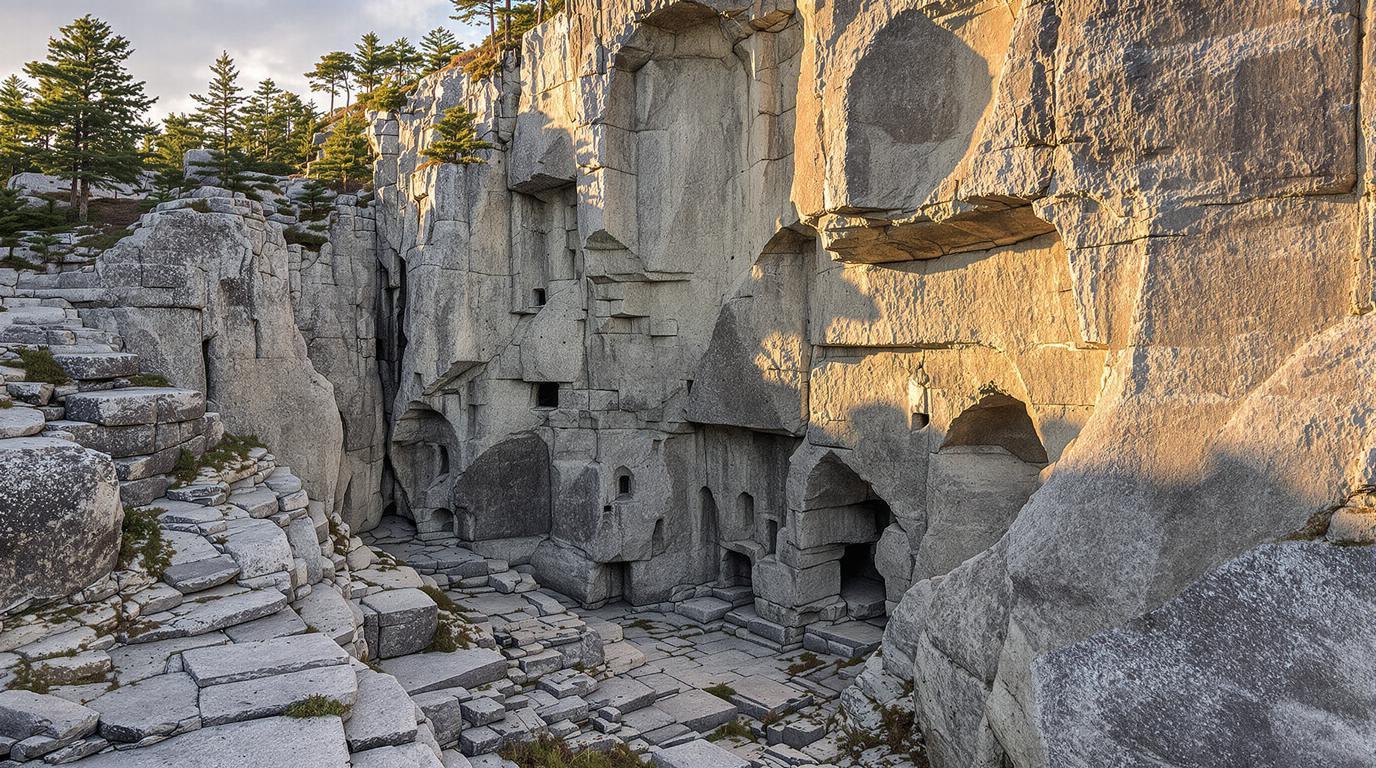When I first heard local quarry workers refer to Blue Hill as “America’s granite heart,” I thought it was just another quaint Maine expression. Then I discovered the Brooklyn Bridge beneath my feet was built on foundations carved from this tiny coastal village’s bedrock.
This 2,788-person community sits quietly on Blue Hill Bay, harboring one of America’s most significant infrastructure secrets. While millions cross the Brooklyn Bridge daily, few realize its granite foundation began in these peaceful Maine quarries.
The locals here still speak of their town as the “quiet pillar of American landmarks,” and after spending time among the weathered granite faces and historic quarry sites, I understand why this nickname carries such profound local pride.
The granite legacy that built America’s most famous bridge
Brooklyn Bridge’s Maine connection revealed
Blue Hill’s quarries produced the distinctive blue-gray granite that forms the Brooklyn Bridge’s massive anchorages and tower foundations. The same stone that withstood 140 years of New York Harbor’s punishing conditions was carefully extracted from quarries just three miles east of this village center.
Beyond the bridge to national monuments
The quarries didn’t stop at the Brooklyn Bridge. Blue Hill granite also anchors the New York Stock Exchange and the U.S. Custom House in Norfolk, creating a legacy that locals describe as “holding up America’s most important buildings.”
What makes this granite so special
The unique geological composition
Blue Hill’s granite differs from typical Maine stone through its coarse to medium texture and exceptional durability. The bluish-gray coloring comes from specific mineral compositions found only in this coastal region, creating stone that weathers beautifully over centuries.
Historic quarrying methods preserved
Walk the old quarry sites and you’ll still see remnants of the cable roads and locomotive tracks that transported massive granite blocks to harbor docks. These industrial artifacts tell the story of an operation that employed hundreds and shaped America’s skyline.
The village that time forgot
Maritime heritage beyond the quarries
Blue Hill’s identity extends beyond granite into authentic maritime culture. The Kollegewidgwok Yacht Club and historic shipbuilding sites reflect a community that built boats and carved stone with equal mastery, creating a unique dual industrial heritage.
Cultural preservation in action
The Blue Hill Historical Society maintains the East Blue Hill Granite Quarry exhibits, including photographs from 1900 showing workers with block and tackle hoists. Local artisans still create granite sculptures, including a famous granite shoe that symbolizes the town’s enduring connection to stone.
Why locals guard this secret carefully
Protecting authentic character
Unlike Bar Harbor’s tourist crowds just 40 miles away, Blue Hill maintains its working village atmosphere. Locals prefer visitors who appreciate the granite legacy and maritime heritage rather than seeking typical tourist attractions.
The insider experience available
During the annual Blue Hill Fair and at Kneisel Hall’s chamber music performances, visitors can engage with residents who still remember quarry stories passed down through generations. These interactions reveal the deep pride locals feel in their town’s foundational role in American infrastructure.
Planning your granite heritage discovery
Best times to visit
Summer months offer the Blue Hill Fair and optimal weather for exploring quarry sites. Late spring and early fall provide quieter experiences when locals are more available to share granite stories and maritime memories.
Essential stops for granite enthusiasts
Visit the Shaw Institute and Blue Hill Harbor School for historical context, then explore the Woods Point quarry area where the Brooklyn Bridge granite was extracted. The Blue Hill Country Club area offers views of the original quarry transportation routes.
Questions about Blue Hill’s granite legacy
How much of the Brooklyn Bridge contains Blue Hill granite?
The bridge’s anchorages and tower foundations incorporate significant amounts of Blue Hill granite, though exact percentages aren’t documented. Local records show multiple shipments of massive granite blocks sent to New York during construction.
Can you still visit the active quarries?
The original quarries are no longer active, but the sites remain accessible for respectful exploration. The East Blue Hill Granite Quarry area preserves the most visible historical remnants.
What other famous buildings use Blue Hill granite?
Beyond the Brooklyn Bridge, Blue Hill granite appears in the New York Stock Exchange and U.S. Custom House, establishing this small Maine village’s stone in America’s most important financial and governmental structures.
Blue Hill proves that America’s greatest achievements often begin in its smallest communities. When you next cross the Brooklyn Bridge, remember that beneath your feet lies the enduring strength of a 2,788-person Maine village that locals still call “America’s granite heart.”
